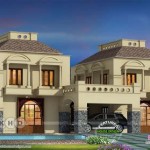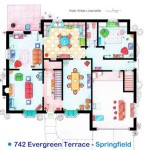An Architectural Journey: Exploring the Essential Aspects of Ancient Roman House Plans
In the realm of architecture, the Romans left an indelible mark that continues to inspire and inform contemporary design. Their residential architecture, in particular, embodied a unique blend of functionality, grandeur, and aesthetic appeal. Exploring the essential aspects of ancient Roman house plans unravels a fascinating tapestry of architectural principles that shaped the living spaces of this extraordinary civilization.
1. The Atrium: Heart of the Roman Domus
The atrium formed the central hub of a typical Roman house, known as a domus. This grand hall served as a reception area, a gathering space for family activities, and a place to conduct business. The atrium featured a rectangular shape with a central opening in the roof, known as the compluvium, which allowed rainwater to be collected in an impluvium pool below. Natural light flooded the atrium, creating a well-lit and airy space.
2. Cubicula: Private Quarters
The cubicula were the private sleeping quarters of the Roman household. These rooms were typically small and windowless to maintain privacy and darkness. The cubicula often featured elaborate wall paintings or mosaics depicting scenes from mythology or daily life, adding a touch of beauty and sophistication to the private sphere.
3. Oecus: Formal Reception Room
The oecus served as a formal reception room where guests were entertained and important meetings took place. This room was often larger and more lavishly decorated than other rooms in the house. The oecus featured high ceilings, marble floors, and intricate wall paintings or tapestries. It was a symbol of the wealth and status of the household.
4. Triclinium: Dining Room
The triclinium was the dining room where Romans enjoyed their elaborate meals. This room featured a low table surrounded by three couches, known as triclinia. The guests would recline on these couches while dining, creating a relaxed and convivial atmosphere.
5. Peristyle: Outdoor Courtyard
The peristyle, a colonnaded courtyard, was a key feature of many Roman houses. This outdoor space provided a shaded and pleasant area for relaxation, dining, or entertaining guests. The peristyle was often surrounded by gardens, fountains, and sculptures, creating a tranquil and inviting environment.
6. Baths: Indulgence and Hygiene
Bathing played an integral role in Roman life, and the domus often featured private bath complexes. These baths consisted of a series of rooms, including a cold room, a warm room, and a hot room. The baths were not only a place for hygiene but also for socializing and relaxation. Elaborate mosaics and frescoes adorned the walls of the baths, transforming them into luxurious and aesthetically pleasing spaces.
7. Slave Quarters
Roman households often relied on the labor of slaves, who lived in designated quarters. These quarters were typically small and cramped, reflecting the subordinate status of the enslaved population. The slave quarters were often located in the basement or on the upper floors of the house.
Conclusion
The architectural design of ancient Roman houses reveals a sophisticated and multifaceted civilization. From the grand atrium to the private cubicula, from the formal oecus to the relaxing peristyle, each element played a vital role in shaping the daily lives of the Roman people. By understanding these essential aspects, we gain a deeper appreciation for the architectural ingenuity and cultural practices that defined one of the most influential civilizations in human history.

Roman Domestic Architecture Domus Article Khan Academy

For A Larger View Atrium House Roman Plans

The Roman Domus World History Encyclopedia

Romersk Villa Arquitectura De Roma Romana Antigua

Copy Of Latin Villa Project Roman House Atrium

Layout Of A Roman House Ancient Rome Image Search Results In 2024 Houses

Ancient Roman Villa Floor Plan Student Handouts
Ancient Roman Homes Domus Insulae Villa Crystalinks

Roman Domestic Architecture Insula Article Khan Academy

Roman Domus From Pompeii Ysis According To Vitruvius In 2024 House Architecture Education








